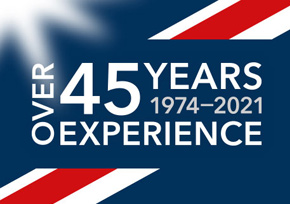T24 - Wireless Telemetry

FAQ Contents
- T24-ACM, ACMm & ACMi for Load Cell, Strain Gauge Transmitter Enclosures
- T24-BC1 Charger Module
- T24 General
- T24-AR Wireless Range Extender
- T24-Base Stations
- T24-PA OEM Wireless Sensor Pulse Transmitter
- T24 Handhelds
- T24-PR1 Wireless Telemetry Printer
- T24-TK Toolkit Software
- T24 Base Stations
- T24-TA OEM Wireless Temperature Sensor Transmitter
- T24-RA OEM Wireless Potentiometer Sensor Transmitter
- T24-ANT -Telemetry Antennas
- T24-Transmitter Modules
- T24-AO1 Wireless Receiver with Analogue Output
- T24-GW1 Wireless Telemetry Modbus Gateway
- T24-LD1 Wireless Telemetry Large LED Display
- Presentations
- T24-RDC Local Wireless Receiver Transmitting to Local Mobile Networks
- T24-RM1 Wireless Receiver with Relay Output
- T24-SA OEM Wireless Strain Gauge Sensor Transmitter
- T24-SO Wireless Telemetry Printer & Driver Display
- T24-SAf Wireless Sensor Transmitter 2KHz Strain Gauge
- T24-WSS Wind Speed Transmitter
- T24LOG100 Software
- T24 Serial Output
Videos
View more videos on
Our YouTube Channel !
Wirelessly transmits a wide range of sensor outputs up to 800 m (2,600 ft), or further using range extender (T24-AR) and receive using a range of base stations, handhelds, displays and other outputs. Excellent battery life of up to 5 years and high accuracy measurement.
For more info see T24 Telemetry System.
T24-ACM, ACMm & ACMi for Load Cell, Strain Gauge Transmitter Enclosures
- Q: What is an ACM?
A: An ACM (transmitter connectivity module) is a housing for any T24 transmitter module providing IP67 protection, or higher with specialist glands, along with power and easy to use field terminals for connecting sensors.
- Q: What is the difference between the ACM and ACMi?
A: The T24-ACMi is physically smaller and provides power via 2 x AA batteries and has smaller terminal block style field connectors for wiring to transmitter modules. The T24-ACM although larger can provide power from an external power supply (5-18V) as well as 2 x D cell batteries which provide a higher battery capacity allowing for longer battery life.
- Q: What transmitter module fits with the ACM and ACMi?
A: When using either ACM you will require an transmitter module that can accept an external antenna denoted by an ‘e’ on the end of the model name. Both ACM’s benefit from being fitted with a T24-ANTA which provides the best omni transmission range although higher gain and more directional antennas such as the T24-ANTC can also be fitted.
T24-BC1 Charger Module
- Q: How are the modules powered?
A: The ACMm is the smallest module and has a separate battery pack (T24-BB1 using 2 x AAA). The T24-ACMi is the mid size module and provides power via 2 x AA internal batteries. The T24-ACM although larger can provide power from an external power supply (5-18V) as well as 2 x D cell internal batteries which provide a higher battery capacity allowing for longer battery life.
Find out the battery life of your system using our Battery Calculator.
- Q: Can this be used with any T24 range of products?
A: Yes
T24 General
- Q: What inputs are available to the T24 system?
A: The T24 system supports Strain, Current, Voltage, Temperature, Pulse and Potentiometer transmitters
- Q: What is the communication protocol?
A: Proprietary protocol based on a 802.15.4 chip. This allows the T24 range to co-exist with Bluetooth, Zigbee & WiFi devices without conflicts.
- Q: What sensors would these inputs cover?
A: Any sensor that provides a voltage, current or ratio metric interface can be connected to an transmitter module, including load cells, inclinometers, accelerometers, displacement LVDT, pressure, potentiometer, pulse, temperature, humidity, ph, shock.
- Q: Is the system point to point?
A: Yes, however the modules may also operate in many to one (such as multiple data transmitters modules communicating with a base station) and one to many (such as a data transmitter module supplying data to multiple handhelds and displays).
- Q: What Frequency does the system operate on?
A: Licence free world wide 2.4GHz, although this frequency is used by other equipment, the T24 range has been tested with Bluetooth, Zigbee & WiFi devices without conflicts.
- Q: What limits the RF range of the devices?
A: Any metal surface will reflect 2.4 GHz radio waves, therefore in a sealed metal box, no RF will escape. However by providing a suitable RF window the signals will propagate out. Water and concrete also limit the RF range.
- Q: What is the range of T24?
A: The T24-ACMm which has an integral antenna has a range of 400 metres direct line of sight. The T24-ACM / T24-ACMi uses a integrated PCB T24-ANTA antenna provides up to 800 metres range in ideal conditions. This range can be increased up to two times with the T24-AR (wireless range extender).
- Q: Can PC software gather data from many devices?
A: Yes, Mantracourt provides freeware for logging up to 100 inputs to one base station, in addition the free Windows DLL and COM driver can be used to gather data through a customer's own PC software.
- Q: How many devices can operate on one radio channel?
A: Many devices can operate on the same radio channel depending on the sample rate of the transmitter modules present in the system. The radio channel is capable of supporting up to 200 data packets per second.
- Q: What software is provided with the T24 devices?
A: All devices are supported by the T24 Tool Kit which allows users to configure all devices from the T24 range as well as view and log data from transmitters modules in range. The software can also be downloaded directly from our website.
- Q: How reliable are the readings?
A: Due to the digital nature of the T24 system, when a reading is received by any device it is guaranteed not have been distorted over the RF transmission.
- Q: Is it possible to use wireless range extenders within T24 network?
A: The T24-AR wireless range extender which can be added to the system can propagate a signal around corners and obstacles. This unit can also double the effective range - but only once.
T24-AR Wireless Range Extender
- Q: How many T24 Transmitter Modules (Strain, Current, Voltage) can the T24-AR support?
A: Many devices can operate on the same radio channel depending on the sample rate of the transmitter modules present in the system. Therefore each wireless range extender is capable of supporting up to 200 data packets per second, ie. 10 devices at 20 Hz or 20 devices at 10 Hz.
- Q: Can I wall mount the T24-AR?
A: Yes, there are 4 mounting holes on the back of the ABS case.
- Q: Will the T24-AR work with existing units in the field?
A: The T24-AR is compatible with all units in the field except for T24-HS Handheld Displays manufactured prior to June 2011. The T24-AR will not wake and sleep unless the T24-HS has the 2.1 radio version which is now installed into all T24 equipment. Existing radio modules can be upgraded if required. Please contact Sales for more information.
- Q. Do I need to align the T24-AR in a particular way to get the signal around corners?
A. If the T24-ANTA PCB antenna is fitted to the receiver and transmitter then no special directions are needed except that the T24-AR needs to be in direct line of site of both the transmitting T24 module and the receiving T24 module.
- Q: Would the Wireless range extender assist with range if I am using an T24-ANTB or ANTC whip antenna?
A: Yes it would provided all your sensors were in the same horizontal plane. If your sensor and receiver are not in the same horizontal plane this can sometimes lead to alignment issues which can often be resolved by using the T24-ANTA as it can radiate in more directions.
T24-Base Stations
- Q: What is the difference between the T24-SO Serial Output and T24 Base Stations?
A: The T24-SO gathers data from up to 8 transmitter modules and, on its serial output, provides a user configurable ASCII string. The output string can contain the summed value of the gathered data. This output can be used to drive serial displays, printers or to simply feed directly into a PC, PLC or other data transmitter systems.
The base stations communicate bi-directionally so are used to configure the devices as well as gather data. The communications protocol is binary and packet based and so requires processing to present the data to the application in a formatted manner.- Q: How many T24 transmitter modules can be controlled by one USB base station at the same time?
A: Transmitter modules are not controlled when providing data, rather data is provided at a user determined rate during configuration set up. The base station can gather data from any number of transmitter modules providing they are on the same channel. The number of modules a single base station can process depends upon the frequency of transmission from the transmitter modules that channel.
- Q: Can base stations integrate to other communications protocols?
A: With the use of the .DLL and COM driver provided with the T24 Tool Kit, users can create tunnelling between the data provided by the base station, to the PC, and another communication protocols.
- Q: Once a transmitter module has been configured, will it require regular connections to the base station?
A: No. Once a transmitter module has been configured it will remain stable for its lifetime providing its operating limits are not exceeded.
- Q: What is the function of the USB and the industrial T24 base stations?
A: Both provide users with a PC interface by which collect data from any transmitter module with in range and configure all devices in the T24 range.
- Q: Is the T24-BSue a stock item?
A: Yes
- Q: How many transmitter modules can be acquired by the base stations?
A: Each base station can use one of 15 channels. From that selected channel a base station can collect data simultaneously from any number transmitter modules depending upon the frequency of readings being provided by the transmitter module.
- Q: How is the industrial base station different to the USB base station?
A: The industrial base station provides not only USB interface but also RS232 and RS485 at multiple baud rates. This module can also be DIN rail mounted.
T24-PA OEM Wireless Sensor Pulse Transmitter
- Q: How accurate is the measurement?
A: At a slow input rate of 1Hz the accuracy is 0.15% and at 3Hz the accuracy is 0.25%. Just under half this error is to allow for temperature drift over the full operating temperature range of the T24-PA device (-40 to +85 degrees) so the accuracy in a stable temperature environment is far better.
- Q: What types of inputs can be used?
A: Any volt free contact input such as relays, voltage sources (up to 24 volts) and NPN open collector inputs.
- Q: What is the counter, and its maximum value?
A: The counter is a counter which increments every time a pulse is detected either on rising or falling edge which can be set in the tool kit. The maximum value for the counter is 4,294,967,295 at which point the counter will overflow.
- Q: How do I reset the counter value of the T24-PA?
A: The counter value can be reset either by contacting the digital input to the ground or by transmitting a data packet with a defined data tag from another device, such as a T24-HA, T24-RM1 or even another T24 transmitter module. This can also be achieved with a power cycle.
- Q: How do I calibrate the output?
A: The T24-PA is factory calibrated to the nearest 0.25 μS which provides users with a set of predefined outputs; Hz, RPM and Period. All of these values can have a custom gain and offset applied to them, the resulting output can therefore be in whatever units or range of values you require.
T24 Handhelds
- Q: What is the battery life of the handhelds?
A: 40 hours continuous use.
- Q: Are they IP or NEMA rated?
A: Yes to IP67
- Q: What batteries are required?
A: 2 x AA, Alkaline, Zinc or Rechargeable NiCad, NiMH.
- Q: What is the difference between the T24-HS, HA & HR handhelds?
A: The T24-HS provides easy one-to-one communication with a single transmitter module.
The T24-HA advanced provides communication with up to 12 transmitter modules providing both individual and resultant values, as well as the ability to transmit data to other output devices using the F1 function key.
The T24-HR roaming will acquire data from any number of transmitter modules in range, offering the most powerful (nearest) one for display first.
T24-PR1 Wireless Telemetry Printer
- Q: Can I print to a T24-PR1 with a T24-HS?
A: No, you would need a T24-HA to be able to use the printer. To print a reading you would press the F1 key.
The button on the printer is used to change the paper.
T24-TK Toolkit Software
- Q: Can you pair an transmitter module to the T24-TK toolkit without power cycling?
A: Yes on the T24 toolkit home page under the Pair button you can click on “click here” and pair without power cycling (module must be firmware version 1.5 or higher).
T24 Base Stations
- Q: What is the difference between the T24-BSue and the T24-BSu?
A: The BSue has a longer wireless telemetry range of 800 m (2,600 ft), which is provided by the ANT A antenna, compared to the BSu which has a 400 m range and an integral antenna. The BSue is housed in a IP67 compact enclosure (the BSu is IP50).
- Q: What is the difference between the T24-BSue and the T24-BSi?
A: The BSue is housed in a smaller casing unit. The BSi provides not only USB interface but also RS232 and RS485 multiple baud rates. This module can also be DIN rail mounted.
T24-TA OEM Wireless Temperature Sensor Transmitter
- Q: What type of sensor can I use with this device?
A: The T24-TA module is factory calibrated to work with PT100 (Type 385) sensors which have a defined change in resistance per degree. (DIN 43760)
- Q: What wiring configurations are available?
A: The T24-TA can be wired in 2, 3 and 4 wire configurations; users are able to choose the best option for their application depending on accuracy requirements, cost and distance between transmitter module and probe.
- Q: What units are available?
A: The T24-TA can output values in degrees Celsius, degrees Fahrenheit, Kelvin or Ohms.
- Q: Is there a way to apply a custom calibration?
A: There is no custom calibration on the T24-TA device however an offset can be applied to any outputted values.
- Q: How can I account for long cable length when performing two wire measurements?
A: There is a custom offset that can be used. This can be used to offset a temperature inaccuracy due to long cable lengths when using two or three wire connections.
T24-RA OEM Wireless Potentiometer Sensor Transmitter
- Q: What output does the device provide?
A: The T24-RA is factory fitted and calibrated to provide an output between 0-100% as the input value varies between the negative and positive excitation.
- Q: How do I calibrate the device?
A: The T24-RA module has a 9 point linearization and calibration feature which allows users to calibrate the percentage output into whatever units are required. For example, calibrating a linear potentiometer would be performed by entering the distances that the plunger you want to measure moves and calibrating at 9 points over that range.
- Q: Can I just measure a resistance?
A: The T24-RA is a potentiometer input which means it can not measure resistance directly yet if wired into a potential divider circuit, with a known resistor value, the change in resistance can be measured.
- Q: Can I use a rotary input?
A: The T24-RA is designed to work with potentiometer inputs that pass from 0-100%. To avoid the T24-RA providing numbers that are outside the calibrated output the module has a rotary limit. This is the value at which the input is expected to move between the maximum and minimum values.
T24-ANT -Telemetry Antennas
- Q: What is the difference between the ANTB and ANTC?
A: The T24-ANTB is a whip antenna with a fixed 90 deg elbow, designed for mounting externally. The T24-ANTC has a variable angled elbow.
T24-Transmitter Modules
- Q: What are the input ranges of the T24 transmitter modules?
A: T24-SA 2.5mV/V calibrated strain gauge based measurement; T24-VA 0-10V, T24-IA 4-20mA, T24-TA pt100 sensor input, T24-RA potentiometer 500 to 100000 Ohms and T24-PA 0.5Hz to 3kHz.
- Q: How is the strain gauge transmitter module calibrated?
A: The modules are factory calibrated to 2.5 mV/V which can be custom calibrated and linearised over up to 9 points by using the T24 Toolkit. The T24-SAf has fixed factory calibration and cannot be linearised.
- Q: What is the difference between the "i" and "e" versions of the transmitter units?
A: The ‘i’ modules all feature an on-chip integrated antenna. The ‘e’ modules are fitted with a miniature UFL connector which can be used with any of the antenna options available; the T24-ANTA (PCB antenna) or T24-ANTB (fixed 90 degree Whip antenna) or T24-ANTC (flexible whip antenna) or T24-ANTD ('puck' antenna fitted with a 0.6m cable and RPSMA connector and supplied with a 100 mm RPSMA to UFL adaptor cable) or T24-ANTE ('puck' antenna fitted with a 100 mm cable and UFL connector).
- Q: What is the difference between the T24-SA and T24-SAf?
A: The standard transmitter modules are capable of providing data up to 200Hz. The ‘fast’ T24-SAf provides data at a fixed 2 kHz.
- Q: What are the sampling rates of the transmitter modules?
A: The T24 standard transmitter modules (SA, IA, VA, RA, TA, PA) sample from 0-200 updates/sec. The T24-SA fast transmitter modules are fixed at 2,000 updates/sec.
- Q: What is the resolution of the transmitter modules?
A: The noise free resolution for a sample time of 10 milli-seconds or less is 15.5 bits for the T24 SA, 12.5 bits for the T24-VA, 14 bits for the VA and 12.25 bits for the T24IA.
The T24-PA’s accuracy % input error @ 1 Hz is 0.15% and for the T24 RA the accuracy is 0.01% of the full scale.
With increased sample times resolution can be increased up to 18.75 bits for the T24-SA.- Q: What is the supply voltage for the transmitter modules?
A: 3V for the transmitter modules and handheld displays. Other modules in the range take 9-36 V.
- Q: Can power be provided to a sensor?
A: Yes, all transmitter modules feature a 5V supply which is a excitation voltage (with exception of T24-RA which has 2.5V supply).
- Q: How are the modules powered?
A: Two standard AA batteries or the T24-BC1 Battery Charger, which provides a re-chargeable power supply using a Li-ion Cell. Find out the battery life of your system using our Battery Calculator.
T24-AO1 Wireless Receiver with Analogue Output
- Q: What Outputs are available?
A: The T24 AO1 (Analogue output) provides 0-10, +/- 10v, 0-5V, +/- 5V 0-20mA 4-20mA source and sink outputs.
- Q: How many inputs can a T24-AO1 output?
A; Just one. Although the AO1 has multiple outputs, only one transmitter module can provide data to it.
- Q: How does an input equate to the output?
A: Using the T24-TK (toolkit software) with the T24 Analogue Output you can declare the upper and lower limits of an output for a given input.
- Q: What is the difference between the T24-AO1 and T24-AO1i?
A: The T24 Analogue Output modules are identical in functionality apart from the T24-AO1i is an IP67 enclosed version where the T24-AO1 is designed for desktop applications rather than industrial and is rated at IP50.
T24-GW1 Wireless Telemetry Modbus Gateway
- Q: Does the T24-GW1 have a USB interface and what are the specifications for this?
A: The USB port on the T24-GW1 is not active for communications (the device only uses RS232 and RS485) but it can be used for power.
T24-LD1 Wireless Telemetry Large LED Display
- Q: Is the display waterproof?
A: The display is water resistant to IP65 / NEMA 4 (the product must be mounted on a vertical surface).
- Q: What sort of power supply is required?
A: The display requires an external DC power supply rated at 11 – 30V DC and capable of supplying 3.5 Amps.
- Q: Is the display affected by bright sunlight?
A: In situations where this may be an issue the provision of a suitable cowl to shade the display will remove the problem.
- Q: Is the brightness adjustable?
A: No
- Q: Is the display power supply input reverse polarity protected?
A: Yes
Presentations
- Q: What inputs are available to the T24 system?
A: The T24 system supports Strain, Current, Voltage, Temperature, Pulse and Potentiometer transmitters
- Q: What is the range of T24?
A: The T24-ACMm which has an integral antenna has a range of 400 metres direct line of sight. The T24-ACM / T24-ACMi uses a integrated PCB T24-ANTA antenna provides up to 800 metres range in ideal conditions. This range can be increased up to two times with the T24-AR (wireless range extender).
- Q: How reliable are the readings?
A: Due to the digital nature of the T24 system, when a reading is received by any device it is guaranteed not have been distorted over the RF transmission.
- Q: What software is provided with the T24 devices?
A: All devices are supported by the T24 Tool Kit which allows users to configure all devices from the T24 range as well as view and log data from transmitters modules in range. The software can also be downloaded directly from our website.
- Q: How many devices can operate on one radio channel?
A: Many devices can operate on the same radio channel depending on the sample rate of the transmitter modules present in the system. The radio channel is capable of supporting up to 200 data packets per second.
- Q: Can PC software gather data from many devices?
A: Yes, Mantracourt provides freeware for logging up to 100 inputs to one base station, in addition the free Windows DLL and COM driver can be used to gather data through a customer's own PC software.
- Q: What limits the RF range of the devices?
A: Any metal surface will reflect 2.4 GHz radio waves, therefore in a sealed metal box, no RF will escape. However by providing a suitable RF window the signals will propagate out. Water and concrete also limit the RF range.
- Q: What Frequency does the system operate on?
A: Licence free world wide 2.4GHz, although this frequency is used by other equipment, the T24 range has been tested with Bluetooth, Zigbee & WiFi devices without conflicts.
- Q: Is it possible to use wireless range extenders within T24 network?
A: The T24-AR wireless range extender which can be added to the system can propagate a signal around corners and obstacles. This unit can also double the effective range - but only once.
- Q: Is the system point to point?
A: Yes, however the modules may also operate in many to one (such as multiple data transmitters modules communicating with a base station) and one to many (such as a data transmitter module supplying data to multiple handhelds and displays).
- Q: What is the communication protocol?
A: Proprietary protocol based on a 802.15.4 chip. This allows the T24 range to co-exist with Bluetooth, Zigbee & WiFi devices without conflicts.
- Q: What sensors would these inputs cover?
A: Any sensor that provides a voltage, current or ratio metric interface can be connected to an transmitter module, including load cells, inclinometers, accelerometers, displacement LVDT, pressure, potentiometer, pulse, temperature, humidity, ph, shock.
T24-RDC Local Wireless Receiver Transmitting to Local Mobile Networks
- Q: What is the range of the T24-RDC?
A: Receiving 800m. Transmitting uses the mobile data network (global).
- Q: How many channels can the T24-RDC support?
A: Up to 200
- Q: What different options for data delivery are there?
A: Email, FTP, SMS & HTTP Post
- Q: How fast can the T24-RDC log data?
A: A maximum of once a minute
T24-RM1 Wireless Receiver with Relay Output
- Q: How do I configure the T24-RM1 device?
A: Using the free T24 Toolkit software. This runs on a PC connected to a T24 base station.
T24-SA OEM Wireless Strain Gauge Sensor Transmitter
- Q: What is the difference between the T24-SA and T24-SAf?
A: The standard transmitter modules are capable of providing data up to 200 sps. The ‘fast’ T24-SAf provides data at a fixed 2,000 sps.
T24-SO Wireless Telemetry Printer & Driver Display
- Q: What is the difference between the T24-SO Serial Output and T24 Base Stations?
A: The T24-SO gathers data from up to 8 transmitter modules and, on its serial output, provides a user configurable ASCII string. The output string can contain the summed value of the gathered data. This output can be used to drive serial displays, printers or to simply feed directly into a PC, PLC or other data transmitter systems.
The base stations communicate bi-directionally so are used to configure the devices as well as gather data. The communications protocol is binary and packet based and so requires processing to present the data to the application in a formatted manner.- Q: How can I display data using the T24-SO?
A: By combining the T24-SO with a serial display such as Mantracourt’s SerialDis unit a display can be created that updates as often the transmitter module transmits data.
T24-SAf Wireless Sensor Transmitter 2KHz Strain Gauge
- Q: What is the difference between the T24-SA and T24-SAf?
A: The standard transmitter modules are capable of providing data up to 200 sps. The ‘fast’ T24-SAf provides data at a fixed 2,000 sps.
- Q: What is the difference between the "i" and "e" versions of the transmitter units?
A: The ‘i’ modules all feature an on-chip integrated antenna. The ‘e’ modules are fitted with a miniature UFL connector which can be used with any of the antenna options available; the T24-ANTA (PCB antenna) or T24-ANTB (fixed 90 degree Whip antenna) or T24-ANTC (flexible whip antenna) or T24-ANTD ('puck' antenna fitted with a 0.6m cable and RPSMA connector and supplied with a 100 mm RPSMA to UFL adaptor cable) or T24-ANTE ('puck' antenna fitted with a 100 mm cable and UFL connector).
T24-WSS Wind Speed Transmitter
- Q: What units of measurement can the T24-WSS display?
A: The wind speed sensor measures feet per second, miles an hour, km per hour
- Q: What batteries does the T24-WSS use?
A: The T24-WSS uses 2 x D cells
- Q: What range can the T24-WSS measure?
A: The wind speed sensor measures ±4% from 10 to 125 mph
- Q: How far can the wireless T24-WSS transmit?
A: 800 metres (2600 ft)
T24LOG100 Software
- Q: Have you taken away any T24LOG100 functionality in this free version?
A: No. All the functionality is still there. (Up to 100 channels of data display and logging, mapping functions allowing intuitive visual displays, report generation and webserver function for viewing on multiple platforms and all over the world).
- Q: Which T24 transmitter modules can I use with this software?
A: It is currently compatible with all T24 transmitter modules, ie: T24-SA, T24-VA, T24-IA, T24-TA, T24-RA, T24-WSS and BroadWeigh shackles BW-S475 and BW-S325.
- Q. I use T24LOG24 at the moment, what are my options?
A. T24LOG100 replaces this and has the same functions and features as T24LOG24 but with additional extras.
- Q. I would like it in my own branding, how does that work now?
A. Branding options are still available (at a cost). Please contact us to discuss your requirements.
- Q: What format is the logging data in?
A: The data is saved as a .csv file.
- Q: Can you define a logging template for each project?
A. Yes. Once configured the project can be saved and later loaded so that everything you need to repeat a previous log setup can be recalled instantly.
- Q: Can I view a trend chart?
A: Yes. You can by double-clicking on the desired channel. Up to 10,000 data points are stored.
- Q: Can I save a trend chart?
A: Yes. Right click on a chart, then click on ‘copy image’. You can now paste the visible chart into an excel spreadsheet.
- Q: Is it possible to set an audible alarm?
A: Yes. The software allows each display channel to be configured with 3 levels of alarm (underload, warning and overload). When one of this criteria is breached the screen will flash and you can set the system to sound an audible alarm.
- Q. I only need to view and log 4 channels. Is this the right software?
A. Yes. You don’t have to use all of the functionality.
- Q. Will I be able to use this software for simple and complex configurations?
A. Yes, this software is only as complex as you need it to be.
- Q: Q: What can I do if I want to log more than 24 channels?
A: If you have a T24 system you can use our free T24LOG100 software which incorporates mapping and graphical capabilities which allows users to view up to 100 channels
- Q. Which versions of Windows is it compatible with?
A. XP, Vista, Windows 7 and Windows 8. We would recommend an intel i3 processor and 2GB of RAM but it will run on a lower spec machine possibly at a reduced speed.
- Q. Does this software run on MACs?
A. Unfortunately not. However with the web server it is possible to view data on any computer, tablet or smart phone connected to the same network as the computer running LOG100.
- Q: Does T24LOG100 work with 64 bit machines?
A: Yes. However, it does not take advantage of them.
- Q: If I install an update will I lose my branding?
A: Any updates that we send you will not affect your branding. (Do not download the free version from the website though as it will put in the Mantracourt branding).
T24 Serial Output
- Q: What does the serial output provide?
A: The serial output provides an ASCII string output of up to 8 values in a user formatted string.
- Q: How can I display data using the T24-SO?
A: By combining the T24-SO with a serial display such as Mantracourt’s SerialDis unit a display can be created that updates as often the transmitter module transmits data.




















